Actionable Guide to SEO & Content

You might think that content creation and SEO are two different marketing activities. In reality, however, the two go hand in hand, and you should never underestimate the importance of good content.
Table of Contents
The Power of Content & SEO
There’s no point putting time, money and effort into your SEO strategy if your content is a load of rubbish. Without high-quality content, you’ll never be able to reap the full benefits of your SEO strategy: quality, relevant content ranks and converts.
When your content aligns with your broader SEO strategy, it can catapult your website up the rankings. However, if your content is letting the side down, it can be nearly impossible to get anywhere close to the top spot for your target keywords.
Here’s Google’s Aurora Morales explaining more on content quality (and what to avoid):
Without high-quality content, search engines won’t be able to read the full potential of your website. It will be too hard for them to understand what your website is about and what it offers to users.
When we refer to website content from an SEO perspective, we mean anything that can offer visitors value and information. It can be anything from blog posts, guides and tutorials to case studies, whitepapers and press releases. Anything that can provide visitors with the information they’re looking for and that positions you as an authoritative voice in that field.
The benefits of great content for your SEO strategy
Creating great content on your website can have many benefits, all of which work towards improving the success of your overall SEO strategy.
Improves your click-through rate - Having high-quality, informative content will encourage users to click through and visit your website. The higher your click-through rate, the better as this directly tells Google that users deem your website a relevant resource for their original search query, and the search engine will rank you accordingly.
If users think your website provides the content they’re looking for, they will be more likely to select your website from the SERPs. Think about precisely what kind of content your target audience is looking for and create it.
Generate backlinks - Google values websites that have a strong backlink profile. The more high-authority websites you have linking to your content, the higher Google will rank it. Backlinks work like a seal of approval for your website.
High-quality content is the key to getting backlinks. Nobody is going to link to content they don’t think is relevant or up to scratch. If you can create content that’s informative and positions you as an industry leader, then you’re more likely to be able to gain backlinks that point to your on-site content.
Provides keyword opportunities - How else will you incorporate your keywords into your website other than by creating content? High-quality content of all different types is a great way to naturally and strategically feature your target keywords.
Without content such as blogs, articles, and whitepapers, it can be difficult to naturally include your keywords on your website without it appearing spammy and evident to both users and Google. It would be best if you always were looking for ways to feature your keywords in a way that is as natural as possible.
Lowers your bounce rate - If you’re creating content that users are looking for and that answers the original intent behind their search query, then they are much less likely to bounce straight back off your website once they’ve landed on it.
Creating high-quality, informative content highlights your authority on a topic and allows you to internally link to other pieces of content and web pages. This is an excellent way of keeping users on your website. If they enjoy one part of your content, then the likelihood is that they will visit other areas of your website too.
How to optimise your content for SEO success
When it comes to creating content for your website, there are some key things you need to think about to make sure it’s optimised for SEO success.
Neil Patel did a great job of summing up how to write great content to rank on the first page of Google:
Choosing your topics - The content you create should be based on the content that your target users are searching for. You need to understand both your niche and what you can offer to your audience, and what your audience is looking for.
When choosing the topics you want to create content around, you need to look at your target keywords. Often your keywords and particularly any long-tail keywords you’re targeting, will provide you with the topic. You can begin to group your keywords and decide which fall into each topic.
For instance, if you’re a gym offering online personal training, some of your target keywords might be “online personal training”, “benefits of online personal training”, “positives of online personal training”, and “pros of online personal training”. All of these search terms will be looking for the same content. You don’t need to create a separate piece of content that targets each one. Instead, you can create one high-quality piece of content that is optimised for all of those search terms.
When choosing the topics for your content, you need to make sure that you select ones that you can successfully position yourself as an expert on. There’s no point in having content on your site that you know very little about. Users will be able to immediately tell if the author of the content has no more knowledge on the topic than they do.
It’s essential to think about the search intent behind the keywords you’re targeting in your content too. Remember, you don’t always need to be pushing sales and your services on to users. Sometimes a user is looking for more information and advice rather than products or services. Not only will matching your content to user intent help your rankings and encourage users to click through to your website, but it will also help you to build trust and brand awareness and reach new users who may well convert into customers later on.
Content quality - With so many websites out there, almost every topic is over-saturated. It’s improbable that you’ll think up a topic that absolutely nobody on the internet has already written about in some way, shape or form. What you need to focus on therefore is what will set you apart from the content that’s already out there? One of the answers is quality.
If you can create infinitely better content than that of your competitors, then it doesn’t matter how over-saturated the market is; you’ll be the best. To be the best, you need to look at the content already ranking in the top spots for your chosen keywords and figure out what you can offer that will make your content better.
There are certain things you can do to ensure you’re producing content of the very best quality, including:
- Cover your chosen topic more thoroughly than your competitors. Offer additional information, insight or more up to date data than what they are providing.
- Provide original expertise or data that is unique to your business. Do you have a member of staff who is truly an expert on this topic? Perhaps you have the resources to carry out new research? Find a way to add value that only your business can to the topic area.
- Link to other high-quality websites and resources on this topic area. Outbound links can help Google to understand the context of your website better.
- Use a layout that makes your content easy to read and follow. Remember to think about how the user experience will be impacted by this content. Please don’t make it too overwhelming, or you risk losing visitors.
- Include different forms of multimedia such as images, video, soundbites and illustrations to help break up your content and make it more appealing and exciting to users.
Content length - One of the biggest debates in the SEO world surrounding content is how long it should be. While some people think the longer, the better, others believe that concise content is what ranks and converts.
When it comes to how Google ranks content of varying lengths, the search engine tends to prioritise longer content. More often than not, longer content is more informative and valuable and will answer the original search query in detail. Therefore Google will rank it accordingly.
This is what Google says on their SEO Starter guide regarding content:

There’s no perfect word count to aim for, although as a rule, we suggest always aiming for at least 500-1000 words when writing content such as blog posts and articles. Longer content that hits around 2500 words is classed as cornerstone content. This is where you can really position yourself as an expert on your chosen topic.
Longer content gives you more opportunity to send Google signs and information on what your content is about. You can add more variants of your keywords, particularly long-form keywords, and make use of more images and alt texts, headings, and internal links.
You should never compromise the quality of your content to reach a word count, though. Google is looking for relevant, high-quality and authoritative content. If you’ve started rambling about unrelated topics or are repeating points you’ve already made to add some extra words, then Google will sense what you’re doing and won’t judge your content to be of a high enough quality to rank well.
When you’re creating your content, there are a few things you can do to make sure it’s the optimal length:
- Look at the results that currently rank for your keywords. If each result on the first page of results is a 2000 word article, you can determine that this is what Google deems relevant to this search term. The likelihood is you won’t rank against these pages with a 500-word article and instead will need to create longer-form content to be in the running. An excellent tool to use is Word Counter
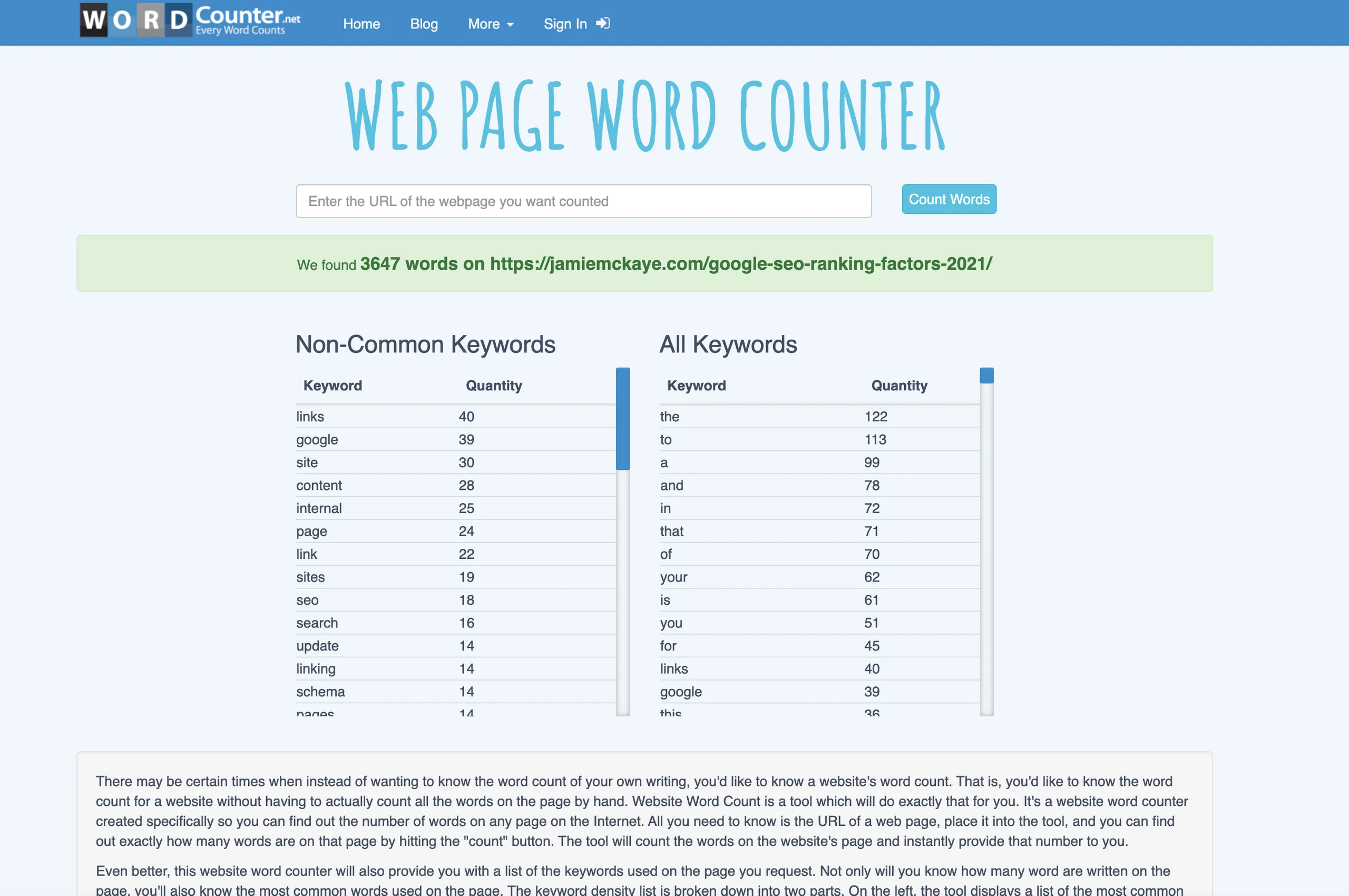
- Quality over quantity. If you don’t have anything useful to say, don’t say it. Don’t bulk out your content just for the sake of it.
- Be as comprehensive as possible in your content. Think about all of the information a user is looking for when making their search query and ensure you include it in your content. Don’t miss something out that they will be likely to find elsewhere.
Content updates - When you’ve got a piece of content that is ranking well and converting visitors, it would be easy to think that you can forget all about it and let it do its thing. What you should be doing, however, is keeping a close eye on it.
Google is constantly crawling the internet for new and updated content, so there’s always the risk that the search engine will find another piece of content that it thinks is better than yours, pushing you down in the rankings.
Keeping an eye on your existing content and updating it as appropriate isn’t just about preventing a drop in rankings; it’s also a great way to help you climb up to the top spot. Adding regular updates to your content is a great way to get Google to reassess your website and hopefully push you up the rankings.
Updating your content is also the key to ensuring it’s relevant and stays that way. You need to ensure that you’re providing users with the most up to date and accurate information. You must remember exactly what content you have on your website to update it accordingly when new information is made available.
Keyword optimisation
A crucial part of creating SEO friendly content is ensuring it’s optimised for your target keywords. Including your keyword within your content is one of the key ways to tell Google that your content is relevant to the search query.
Whilst you don’t want to go overboard and make your content seem unnatural, there are various ways you can feature your target keyword in your content to help push you up the rankings.
Title tag - The title tag is one of the most influential places to put your keyword. Your title tag is the title that will appear in the SERPs if you rank for a search term. Title tags work by telling Google exactly what the content on a webpage is about. Therefore it should be pretty evident that it needs to include your target keyword.
Read The art of writing the perfect title tag.
Title tags are relatively unique in the world of SEO in that they should be created with both Google and the end-user in mind. While they tell Google what the content on your web page is about, they also tell the user.
When a user is presented with a page of results after making a search query, they will use the title tags to determine whether or not the result is relevant to what they’re looking for and, ultimately, if they will click the result and visit the website.
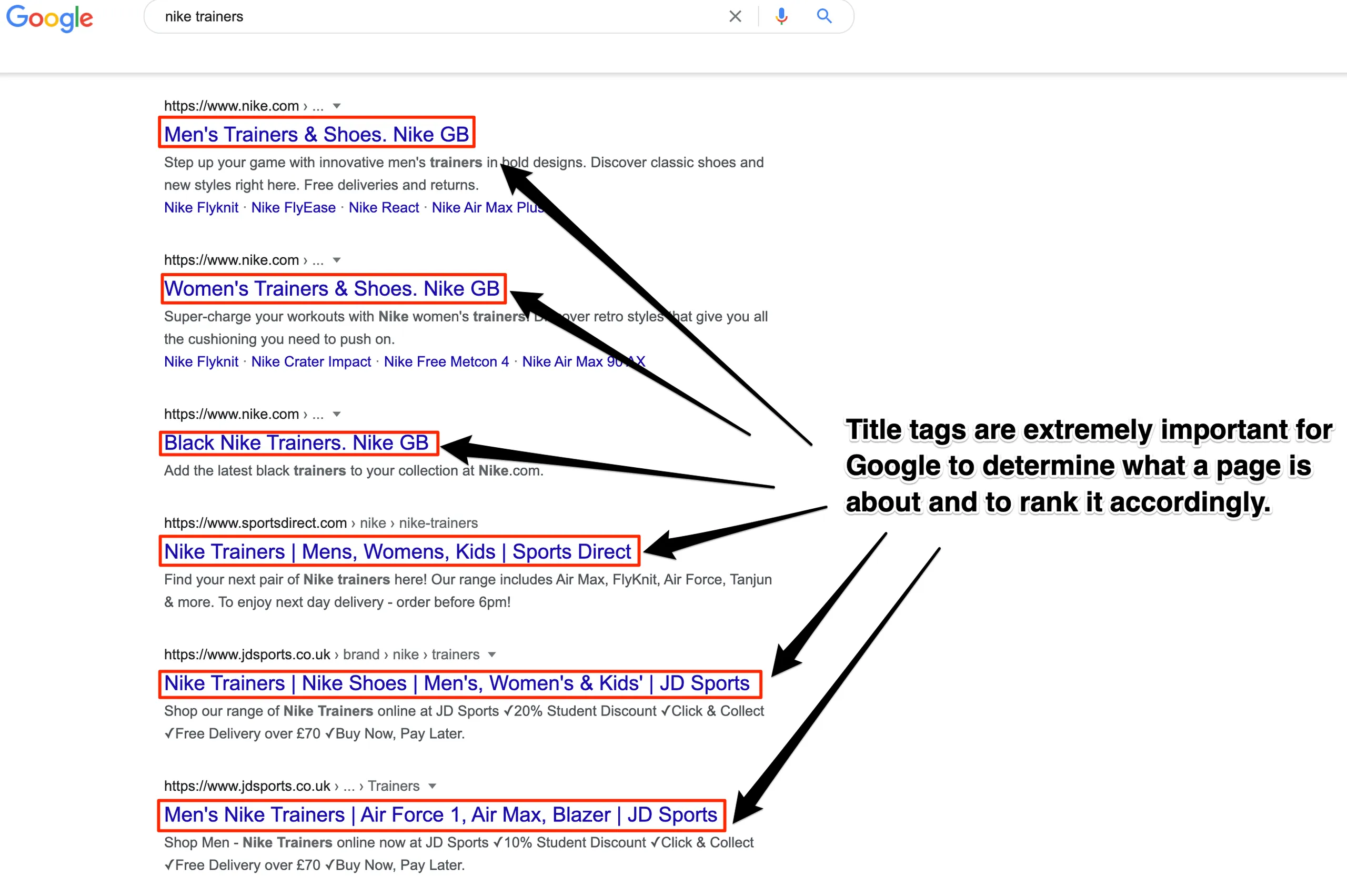
If your title tag includes your target keyword, that sends a clear signal to Google and the user that the web page features relevant content to the initial search query.
Your title tag is clickable from the SERPs and will take users straight to your webpage. There are limited characters for title tags, though, and Google will usually show only around 60 characters in its results, so it’s essential to make sure you feature your keyword at the beginning of your title tag to avoid it being cut off.
Meta description - The meta description is the description of your web page that appears underneath your title tag in search results. Meta descriptions are a great way of giving users more information about your web page’s content, helping them make a more informed decision about which result they will choose.
Google will also sometimes use meta descriptions to help better filter results to ensure they present the most appropriate options to users.
Anything that describes the content on your website should feature your targeted keywords, and the meta description is no different. Google will usually limit meta descriptions to around 160 characters. Your meta description must be long enough to provide additional detail without being so long that Google cuts it short.
When featuring your keyword, you should aim to use it once or twice in the meta description, any more, and you risk it appearing unnatural to both Google and users.
Body text - There’s no ideal number for the number of times you should feature a keyword within the main body of your content; however, the most important thing is that you include it at all. If your body text doesn’t mention your target keyword once, Google won’t think the content is relevant.
Where possible, try to include your keyword within the first 200 words of your content. The introduction to your content will typically explain what the article is about. Therefore, it makes perfect sense for your keyword to feature here.
Remember not to focus on including your keyword, causing you to sacrifice the quality of your content. You should always prioritise high-quality content that provides the user with the information they’re looking for; incorporating your keyword naturally into that is simply a bonus!
Subheadings - Subheadings are a great way to break up long paragraphs of text and make your content more accessible to users. Large chunks of text can be off-putting, so using subheadings can help improve the overall user experience of your website.
They’re also a great place to feature your keywords. Using your header tags (H1, H2, H3 etc.) can help to tell Google what the content is about and the key, important topics and information your content provides.
Internal link anchor text - Internal links are a great way of directing users to more content on your website and can help to increase their trust in you, hopefully prompting them to convert.
It would help if you always tried to feature internal links within your content and the anchor text (the clickable text that appears in your content) is a great place to add your target keyword...providing it’s relevant to the content you’re linking to.
Here’s an example of natural internal linking:
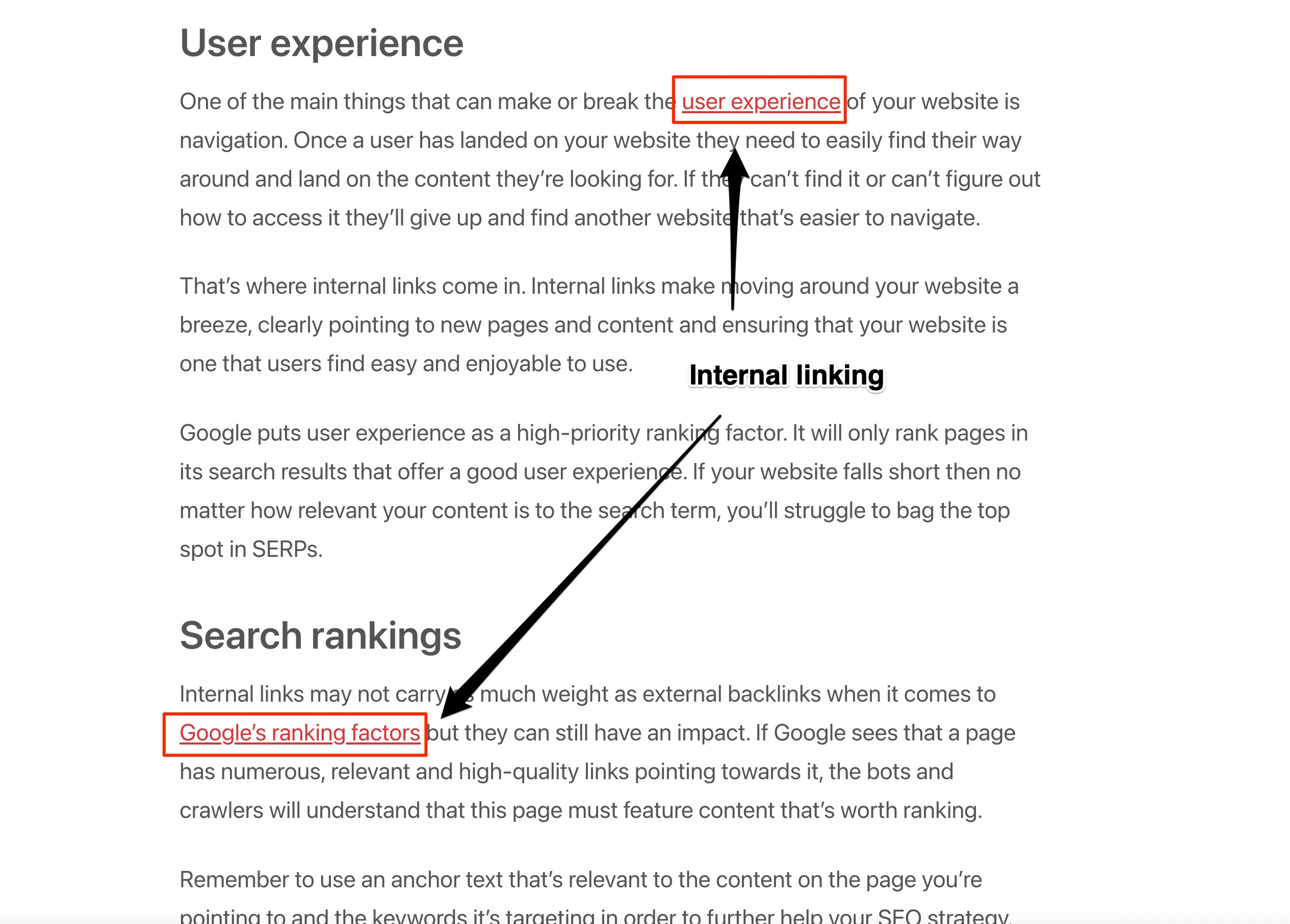
Using your keyword as the anchor text for an internal link helps show Google that your website features relevant content for the search term and directs them to where they can find it. You’re making Google’s job easier for them.
This is where having a content plan comes in useful. If you plan out your content successfully, you can create an internal linking structure whereby each piece of content links to another, helping to signify to Google the relevance of your content for the keyword it’s targeting.
Don’t be tempted to use your target keyword as the anchor text for an external link, though. Doing this is basically telling Google that this external page is more relevant to the keyword than your page and risks Google deciding to rank it higher in search results.
Image metadata - Using images on your web pages and particularly within your content can help to improve the user experience of your site, breaking up large chunks of text and helping to make the page more visually appealing. They’re also a great place to add your keywords.
Yes, that’s right, the metadata of an image is the perfect place to include your target keyword. It would be best to have your keyword in the image file name, caption and title. The most important place to feature your keyword, however, is the image alt text.
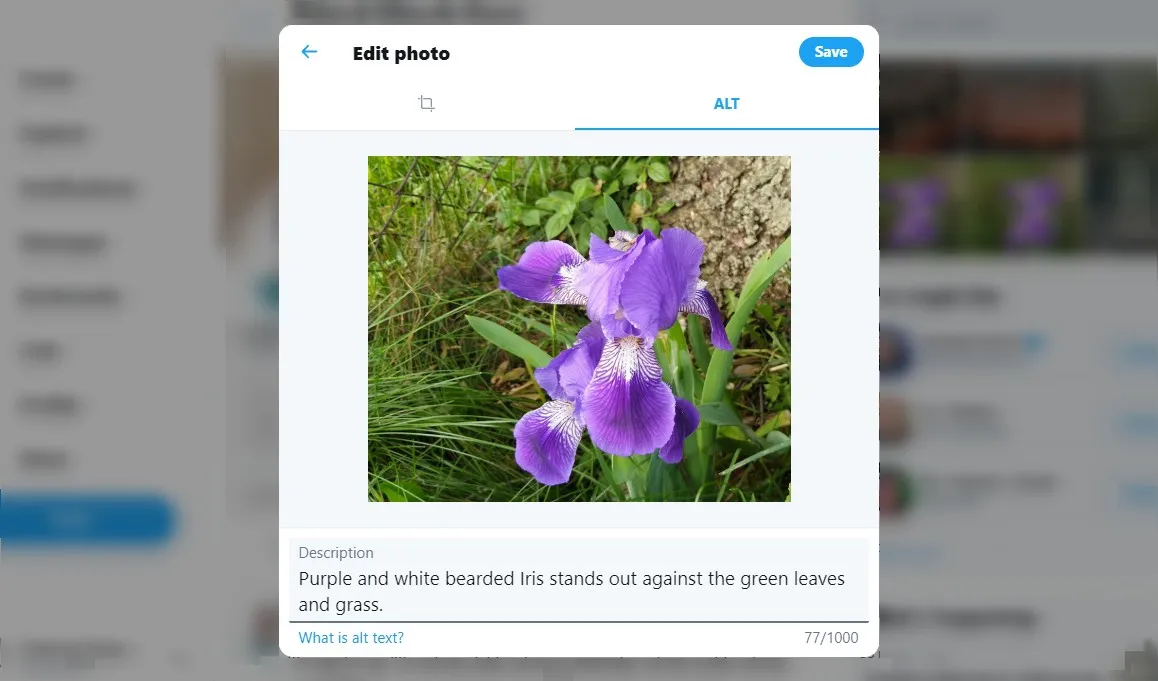
Alt text describes the image for both visually impaired users and Google's bots and crawlers when they’re indexing your site. Google can’t read an image in the same way a human can and instead relies on the alt text to tell it what the image is of and if it’s relevant to the content.
The alt text will also help your image to rank in Google Image Search which will in turn help to bring more visitors to your website.
URL - Another good place to ensure you feature your keyword is in the URL for the individual web page. If you’ve featured your keyword in the page title then it should feature in the URL that’s automatically generated for the page but if not you can alter this before hitting publish.
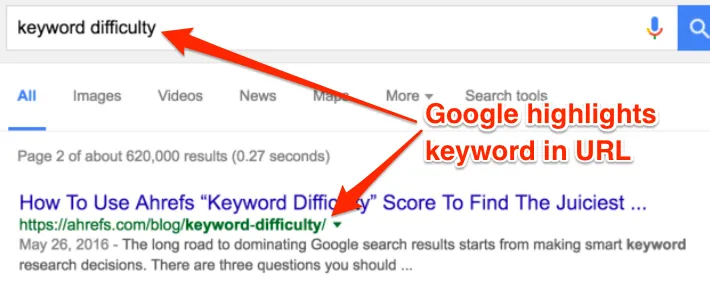
When creating your URL, try to keep it short and straightforward, making it easy to read for users. Whilst it’s certainly not the most important SEO factor, it won’t do you any harm to include your keyword.
One of the benefits of including your keyword in the URL is that if someone links to the web page using the raw link (e.g. places the link in the text and doesn’t use an anchor text), then the backlink will include your target keyword.
Common content mistakes to avoid
Often people will make the same common mistakes when creating website content to try and impress Google and rank well. They’re listed below so that you can avoid making them too!
Keyword stuffing - Whilst it’s important to feature your keywords in your content, don’t be tempted to go overboard. Stuffing your content with keywords over and over again will simply make your content appear spammy to users. Google hates keyword stuffing and won’t rank your content if it thinks you’re trying dodgy tactics to beat its algorithm.
Not targeting the search query - When you plan out and create your content, you need to ensure it’s actively targeting the intent behind the initial search query if you want it to appear in search results. Think about precisely what it is that users are searching for and provide them with that content. It’s easy for people to think up relevant content topics for their business, but these are useless if nobody is looking for that information.
Duplicating content - Your content needs to be unique. If Google thinks you’ve got duplicate content on your website, then it will penalise you in the rankings. Even if you think you’ve answered a particular question or topic elsewhere on your website, you can’t just copy and paste it across. It can be tempting to copy your competitors’ content on their website; after all, if it ranks for them, it will rank for you, right? No. Not only is that plagiarism, but Google will also know that the content on your site isn’t unique.
Not making use of content formats - A common mistake that people make when creating content is simply writing extensive body content and clicking upload without using formatting features such as subheadings and bullet points. Subheadings are a great way of inputting your keywords into your content, and opting for different formats helps break up your content and improve the user experience.
Your content isn’t evergreen - Evergreen content is content that will still be relevant and drive traffic to your website years down the line. You may be tempted into creating content around viral trends or news stories; however, remember, in today’s digital world, this stays relevant for just a few days, sometimes even less. Rather than focusing on too time-sensitive content to appear relevant, put the time into creating evergreen content that users will always be looking for.
Evergreen content will help drive traffic to your site for many years instead of trend-led pieces, which may produce an initial burst but that will eventually taper off and offer you no benefit.
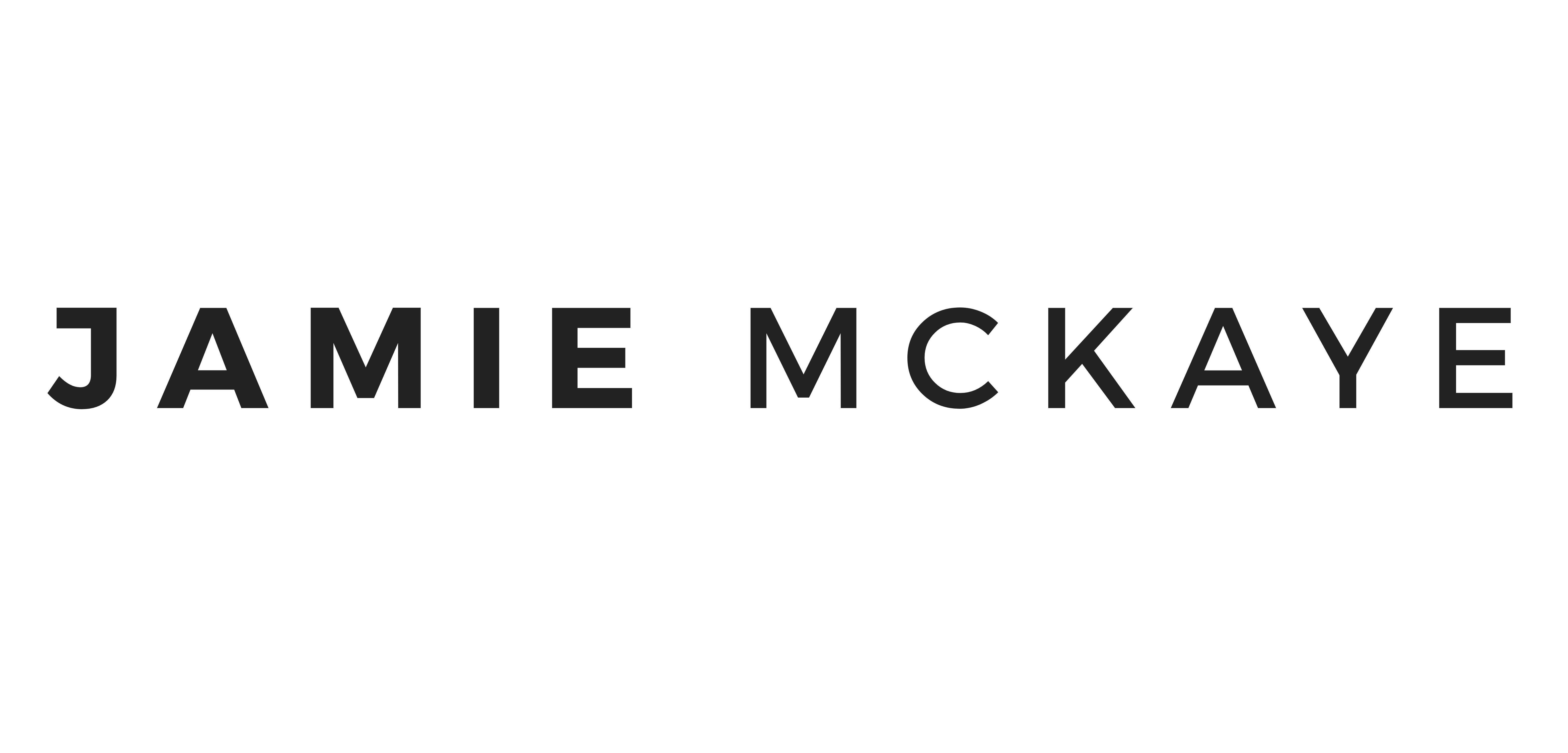

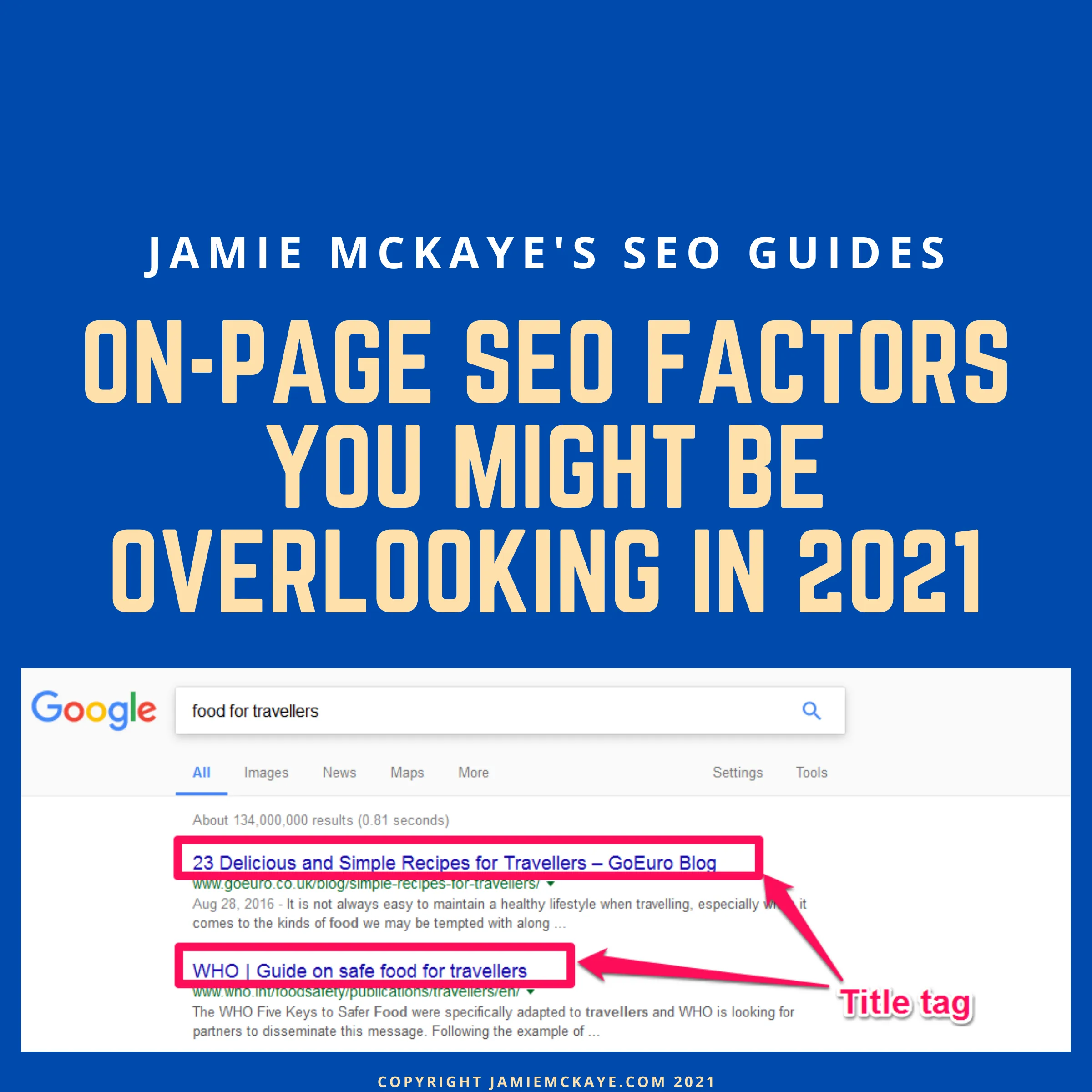
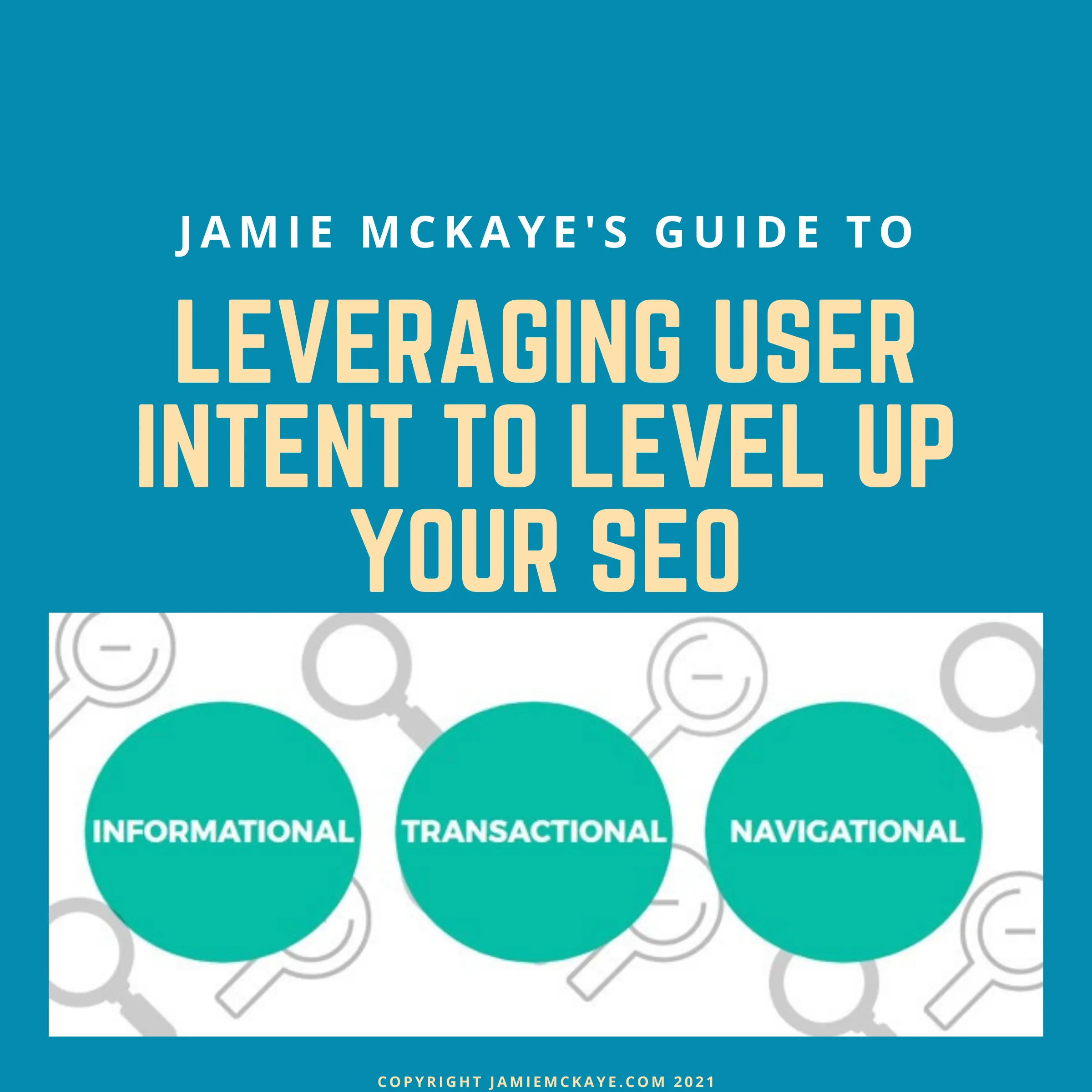
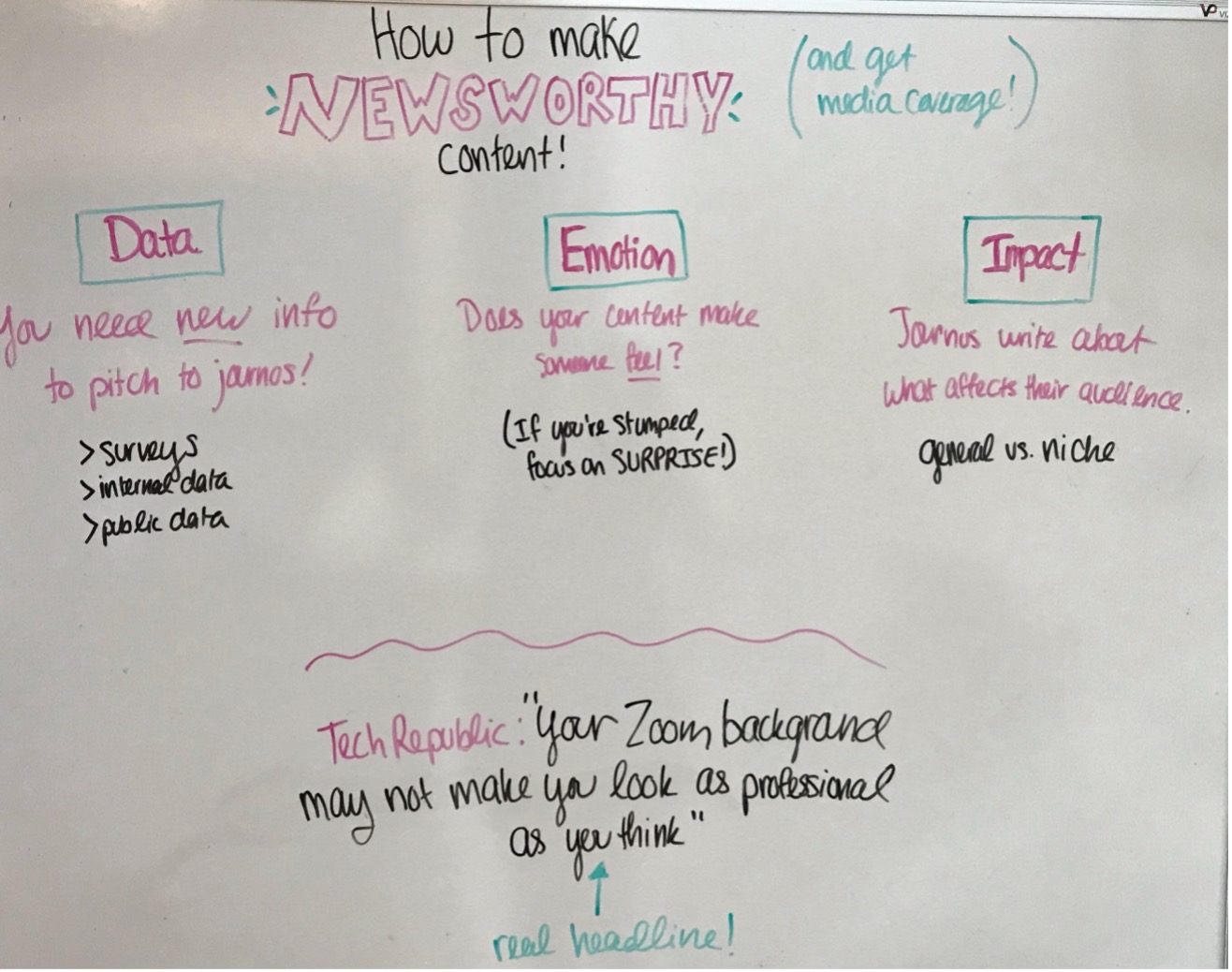
Comments